![]()
Radio’s Guide to Local Digital Advertising
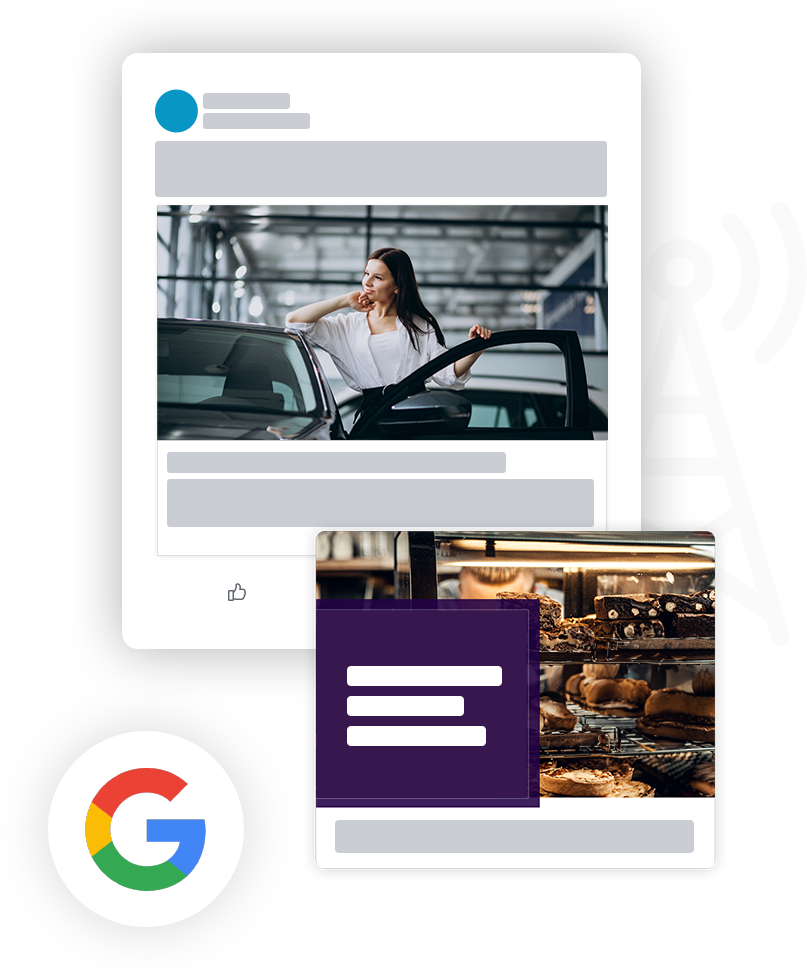
The Future of Local Media Sales Is Digital + Radio
The industry stands at an interesting crossroads. Radio’s reach and impact continue to be grand and loud in the 21st century. However, airtime revenue remains stagnant or decreasing as companies spread out their pool of money for advertising. You can preserve radio ad spending while also expanding offerings in the digital realm to meet advertisers’ needs. Ultimately, a mix of tactics enables these businesses to achieve their goals of engaging audiences, building brand awareness and converting interest to purchases.
So, how can radio be successful in selling local digital advertising? What challenges does the industry face, and how can you protect radio revenue while gaining more of an advertiser’s budget?
We’ll answer these questions and many more in radio’s guide to local digital advertising.

The Tipping Point Is Near: Digital Revenue to Overtake Traditional in 2025
BIA Advisory Services, the expert in local advertising forecasting, always includes the split between digital and traditional in its reports. Traditional has continued to have a slight margin over digital, but 2025 is when this will tip. Their analysts project that digital will represent 52% of local spending next year, and traditional will account for 48%. Growth for digital, including all tactics, will rise by 13.3%, and radio OTA will decline by 1.6%.

This is an important milestone for local advertising spend. It illustrates the progression of businesses in diversifying their ad budgets. The biggest mover in this dynamic is the money leaving traditional TV and funneling toward OTT/CTV. It’s the fastest-growing local digital channel, according to BIA. It’s also indicative of changing consumer preferences and the increase in cord-cutting.
This migration of watchers doesn’t correlate to radio. Radio still reaches a large portion of the U.S. population, and it’s now the leading mass media for reach. How people listen has changed, with many streaming, especially younger generations.
As a result, radio has less to fear in terms of losing audiences. However, revenue is stagnant, often because businesses discount radio as a means to generate interest and convert it. It performs strongly here but works even better when combined with digital tactics!
Radio is now the leading mass media category for reach, overtaking broadcast TV, with 84% of Americans 18 and older tuning in weekly. (Nielsen)
Heavy radio listeners have 4.7 billion weekly brand conversations, with 51% converting to purchase intent. (RAB)
For every $1 a company invests in radio ads, they can expect a short-term return of $3.12 and a long-term one of $6.29. (Thinkbox)

The Local Digital Advertising Opportunity: Radio’s Perfect Position
So, why is radio in such an ideal situation to be a digital marketplace? It’s more about radio’s roots in the community. People overwhelmingly trust radio over other media, and stations have a presence in their markets. The relationships between radio sales teams and local businesses are strong and grounded. That’s the jumping-off point for discussing how digital can deliver targeted advertising to reach people.
Turning radio salespeople into digital consultants isn’t as difficult as you may think. They don’t have to know everything about each tactic. It would be impossible to achieve this proficiency, as digital technology constantly changes, and many factors influence what to recommend and how to target. What is important is for sellers to understand the needs and challenges of businesses so they can determine what type of campaign will work the best.
You need the foundational pieces in place to capture success and become profitable. Currently, challenges for the industry are creating obstacles.
Challenges Faced in the Digital Market
With the keys to success in place, you have the proper start to compete for digital dollars. Challenges persist in such a competitive environment. Defining these and developing a plan to overcome them fuels your station’s ability to be profitable in selling digital.
Challenge 1:
Overcoming Objections
Your advertisers may have a mountain of objections. They may object to the whole idea of digital advertising. They may have misconceptions about how it works, whom it reaches and what it costs. The second overall objection is that they may not feel confident buying it from you.
Here are some ways to counter the loudest objections.
Objection:
“I don’t need to use digital advertising because everyone already knows my business.”
(hover)
Continuous advertising increases brand awareness. New people who haven’t heard of the business are moving to the area, and only a small portion of the audience is in the market for their product or service at a certain time. Digital advertising keeps the brand top of mind and introduces it to those newly arriving in the target geography.
Objection:
“I don’t have the resources to create digital ads.”
(hover)
There are many low-cost options for creating static and video ads. If applicable, you can offer your own resources. Provide businesses with resources so they understand how easy the creative part is.
Objection:
“Why should I buy digital from a radio station?”
(hover)
Digital is part of your complete portfolio to solve business challenges. You can deliver integrated campaigns with the reach of radio and the targeting of digital. A campaign that includes both historically performs better, and you have access to high-quality inventory and transparent reporting.
Objection:
“I don’t have the budget for digital.”
(hover)
Ask about any funds they have for marketing or advertising and how they are using them now. There may be an opportunity to shift dollars from TV to streaming, for example. Explore some low-cost tactics like display as a “test” campaign to demonstrate the value they can receive.
For more help with overcoming objections, watch our on-demand webinar, Objections to Opportunities.
Challenge 2:
Outshining the Competition
Why should local businesses buy digital from you? Most still aren’t, according to the annual benchmarking study on digital radio sales. Competition for these digital dollars can be fierce and comes from many organizations — local newspapers, other stations, TV and agencies.
How to compete against each:
Against other radio stations
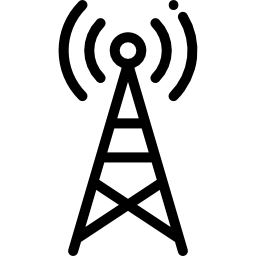
A lot of digital advertising is a commodity, but your solutions get a boost with high-quality, premium inventory.
With the right system, you can compliantly execute ads for restricted categories like cannabis, alcohol and gambling.
Against TV

You can offer OTT/CTV advertising, which is where audiences are moving. It’s often more cost-effective than traditional TV and is targetable and measurable.
Against newspapers

These organizations push their own digital inventory over what aligns best for the advertiser.
Against agencies

Your ad offerings will likely have a better price point, as agencies stack on the fees.
If it’s a national agency, you have the market expertise advantage.
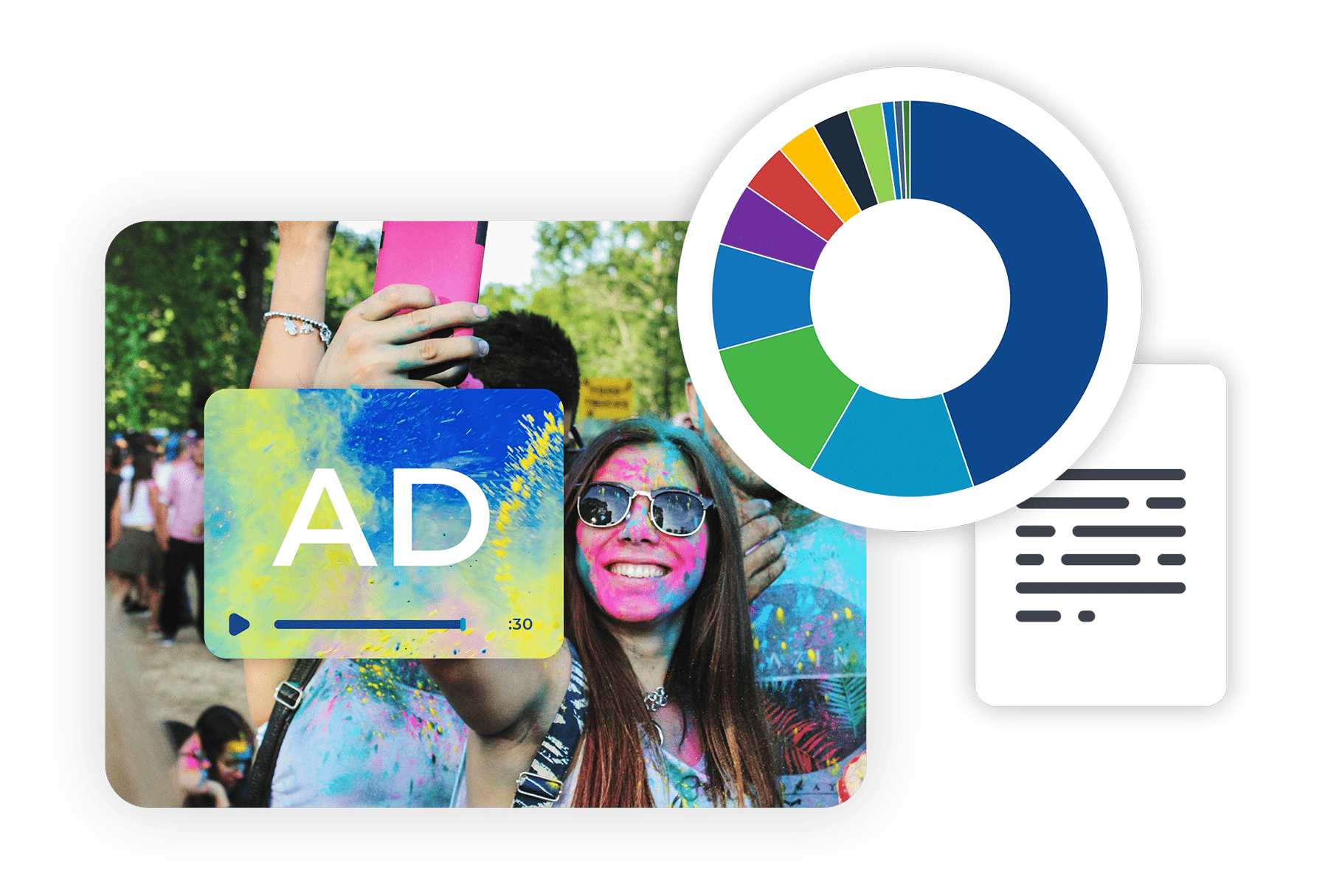
Challenge 3:
Boosting Seller Confidence and Retaining Talent
Digital sellers working for radio have become more sophisticated in selling it, and sales managers have higher confidence in their abilities. Digital acumen, however, isn’t a finite topic to learn. It’s always changing. Tactics and how targetable they are have evolved. Execution workflows can change, and the entire industry is still adjusting to the new world of cookies.
Digital sales proficiency is a lifelong learning journey. Your team needs access to on-demand learning and digital strategists to guide them. Making this a central part of your local digital advertising sales strategy is critical.
You may also need to change behaviors. Sellers may be reluctant to propose digital because the commissions are not as high. Experimenting with incentives can change their tune.
The conversation must be about gaining more of a company’s overall budget. That benefits your station and improves the chances of renewals. You can also retain your star sellers with this approach, as they get the support and compensation they desire.
Challenge 4:
Inefficiencies and Costs That Minimize Margins
The next challenge focuses on the profitability of local digital advertising. It doesn’t have the same margins as radio spots or your O&O (owned and operated) inventory. Pinching profits from digital can be cumbersome, but there are clear avenues to more prosperous returns.
Reduce Ad Operations Costs
(hover)
Scrutinize Media Costs
(hover)
What you don’t want to do is downgrade quality because it’s cheaper. This could result in performance issues, leaving customers upset. Instead, look for third-party digital providers that emphasize quality but also keep costs within reason.
Eliminate Junk Fees
(hover)
If you’re working with an agency, most tack on a managed service fee that doesn’t actually add any value. There could be additional nickel-and-diming for reporting, data access and integrations. Examining every cost on your bill could lead you to realize where your profitability is going.
Learn more about optimizing digital revenue by reading our e-book: Is Selling Digital Advertising Profitable for Your Station?
Challenge 5:
Protecting Radio Revenue While Growing Share of Wallet
You can be both radio-first and digital savvy; it’s not one or the other. Advertiser conversations can always be radio and.
Selling digital to your radio advertisers doesn’t have to impact the revenue from spot ads. When you’ve laid out plans that infuse radio and digital together, your clients will want to have both working for them to attract and acquire customers. If you can present those in one comprehensive proposal, all the better.

The Keys to Succeeding at Local Digital Advertising Sales
We’ve looked at the opportunity, competition and challenges. To achieve long-term success and profitability, prioritize these three things.
Support from the Top
Digital sales won’t become part of your sellers’ portfolio without leadership being behind it. Otherwise, they’ll stick with what’s comfortable.
A show of support from the top includes:
- Investing in technology and sales tools to make selling efficient
- Communicating to sales teams that digital is critical to the company’s revenue growth
- Defining specific strategies for making digital part of the ad picture
A big part of this top-down approach is ensuring that there are separate digital goals for each salesperson. It’s a completely different number they have to hit outside of other ad sales. Communicating this and any commission details to your team will be essential in setting them up for success.

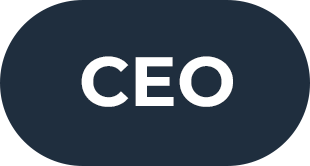
Ongoing Training and Upskilling
Digital ad sales training should be part of your digital sales strategy. Providing relevant resources builds sellers’ confidence and gets them comfortable talking to customers.
The elements of training and upskilling should include:
On-demand online courses:
Let sellers learn at their own pace with access to these classes, which include the fundamentals of digital advertising and more advanced topics.
Role-playing:
Make this part of your sales meetings so you can put people in real scenarios and discuss the best responses. It’s a great option for working on objections.
A library of resources on tactics and strategies:
Provide your team with assets that answer questions about specific ad types, targeting options, aligning tactics to goals, and other information. This sales enablement content should deliver ideas and tips they can use when interacting with customers.
Access to digital experts:
Partner with a solutions provider that delivers more than software and offers on-demand digital specialists to support your sellers. They can help salespeople refine their pitch, recommend ad mixes and instruct them on the best ways to close digital deals.
Simple Technology to Future-Proof Your Station’s Revenue
Last but not least is the technology piece. With many options available, you can compare and contrast based on available tactics, inventory quality, costs, usability and more. However, you’ll find that Marketron NXT is the only solution designed for radio.
NXT streamlines radio and digital into one workflow. It connects to our traffic platforms, and when used with Marketron Traffic, the systems sync seamlessly. Radio stations trust our technology, and they’ve already submitted over $400 million in digital advertising orders since its introduction to the industry.
You can build proposals with digital and airtime together, consolidate invoicing for all ads and get paid electronically. Be confident in the premium inventory you can offer, and see the metrics that matter with transparent reporting. NXT also has built-in business intelligence insights, giving sales managers complete visibility.
NXT empowers your team to sell all types of digital ads, including those in restricted categories like cannabis, alcohol, political and gambling. Finally, you can use the Custom Solutions Desk for creative and social media campaigns.
How can one system do so much? We built it to be connected, easily enhanced, and aligned with radio station workflows. We’ve invested time, money and resources, and we continue to do so to meet the changing needs of radio, an industry we’ve proudly supported for over 50 years.
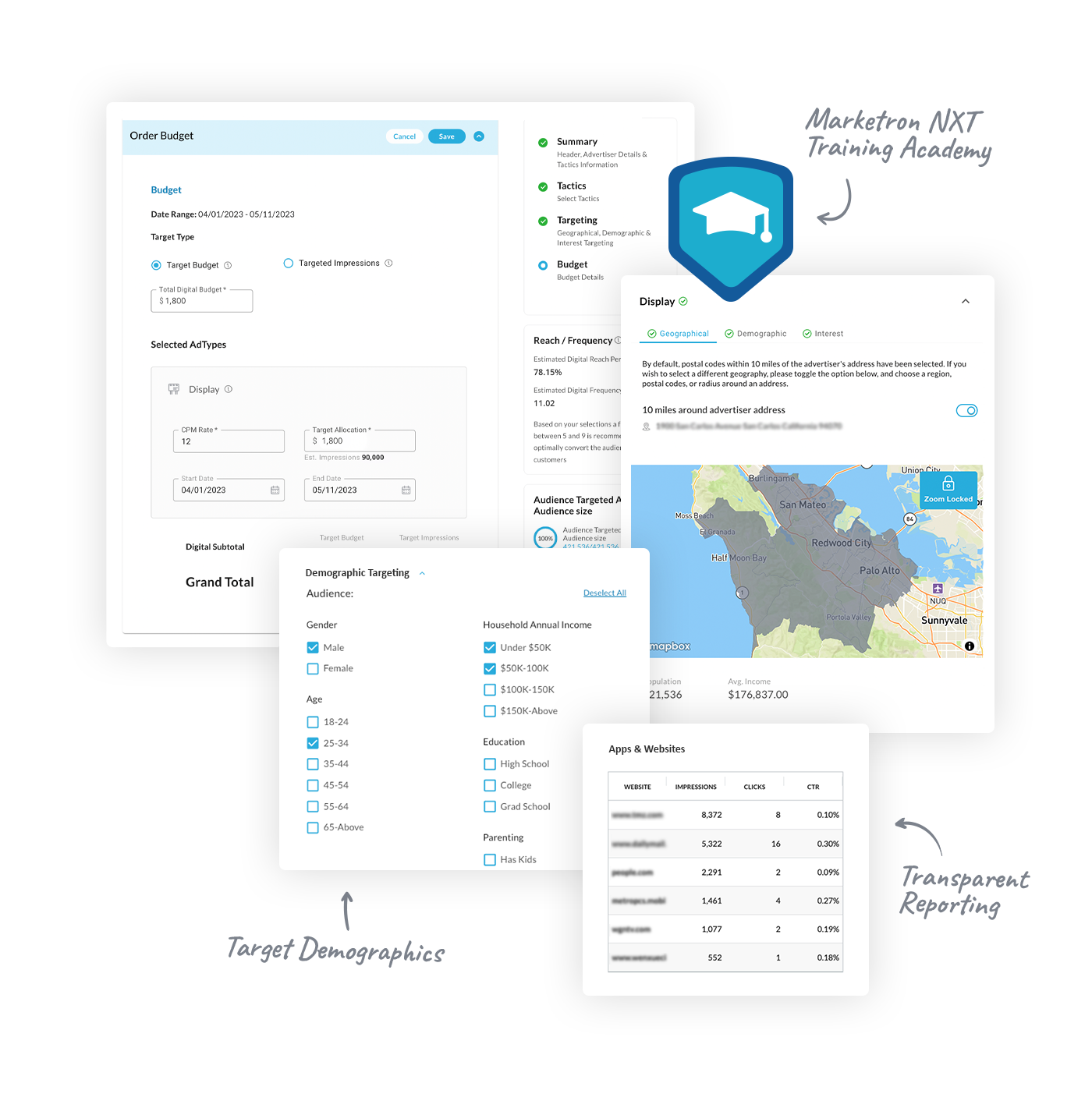
Are you ready to be radio’s next digital advertising success story?
It starts with requesting a custom NXT demo with our team.
Complete the form to get started.
© 2024 Marketron Broadcast Solutions
Privacy & Legal


